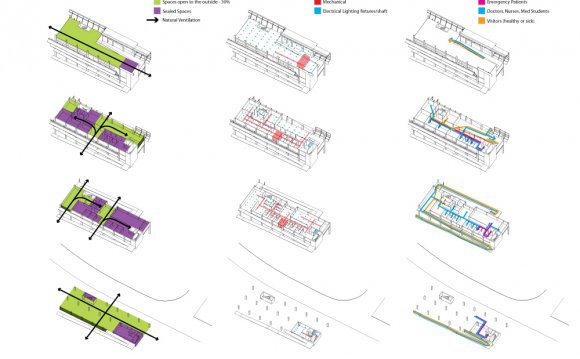
Homes today are built to be airtight and energy-efficient, but many consequently suffer from poor indoor air quality, and ventilation is crucial to maintaining healthy air. Indoor air becomes polluted with allergens from pets, odors and humidity from bathroom and kitchen use, and the off-gassing of volatile organic compounds from carpeting and furniture. Ventilation removes polluted, humid indoor air and replaces it with fresher, often less-humid outdoor air.
Two options for removing polluted air and introducing fresh air are mechanical ventilation and passive ventilation. Most often, mechanical ventilation is used exclusively. It includes exhaust fans in kitchens, baths, laundry rooms and attics required by many local building codes. The healthier alternative is to use passive ventilation in conjunction with mechanical ventilation.
Passive ventilation systems use a series of vents in exterior walls or at exterior windows to allow outdoor air to enter the home in a controlled way. Natural airflow, wind and the temperature differences in indoor and outdoor air help to draw in fresh air and circulate it through the home. The fresh air forces polluted, humid, warmer air into vertical ducts (aka thermal chimneys) that lead into the attic, where the air is exhausted to the outside. The fresh-air vents are specially designed to slow down incoming air and disperse it indoors. An adjustable precision damper within the vent allows the regulation of airflow, and vents are typically equipped with a filter to screen out dust and insects. Some fresh-air vents also have acoustical features for masking outdoor noises from sources such as traffic, airplanes and trains.
Passive ventilation doesn't require electricity, so it saves energy and cuts down on carbon monoxide emissions. It's quiet, inexpensive, energy-efficient and low-maintenance because it requires no moving parts and has no operating costs. After installation, the only maintenance needed is periodical cleaning of the filters.









